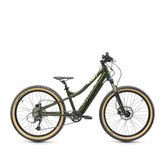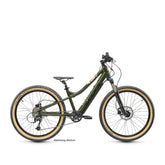This is how you find the right children's bike helmet
The helmet has to come with you!
At the latest after you've seen the classic road safety education video - the "melon falls on the ground" video - it should be unmistakably clear why even the littlest ones should be equipped with a bicycle helmet when whizzing around on two wheels. Things get more complicated when it comes to the question of how to find the best bicycle helmet for your child. How should he sit? How should it be equipped? What makes a good children's bike helmet?
We'll tell you what you should pay attention to when buying a children's bike helmet.
The right fit
The number one criterion when choosing the right bicycle helmet is the fit. A bicycle helmet must fit properly! It must neither be too big nor too small and must not slide forward, backward or to the side.
Our tip: Measure the child’s head circumference in advance. You can use size tables to get an initial indication of the required helmet size. We also recommend trying on the new bicycle helmet in person before purchasing, as the size information can vary from manufacturer to manufacturer.
For most manufacturers, size XS corresponds to a head circumference of 44-49 centimeters. Size S should be suitable for a head circumference between 46 and 51 centimeters, while the intermediate size S/M is in most cases suitable for children with head circumferences between 49 and 53 centimeters. Between 52 and 58 centimeters, size M is the correct size for most manufacturers. In most cases, size L corresponds to a head circumference between 59 and 63 centimeters.
What else should you pay attention to?
A bicycle helmet in bright, bright colors ensures that your child is seen better in traffic.
Tip: Many helmets are already equipped with light or flashing elements that can be activated in poor visibility conditions.
Ventilation slots reduce sweat formation at higher temperatures, while fine-mesh nets ensure that no insects can get into the helmet from the outside while riding. Chin straps that are not too tight with anti-pinch protection and soft inner padding ensure optimal wearing comfort. A good children's helmet should also be of high quality, but not weigh too much - this could be perceived as annoying. Also pay attention to test seals such as the TÜV test mark, the standard reference EN 1078 as well as a GS and CE mark.
How long can you use a bicycle helmet?
It is recommended that a bicycle helmet should be replaced approximately every 5 years. This is due to any material fatigue that may occur, which can impair the protective performance of the helmet. However, the situation is different after an accident or a major impact. After such an incident, the affected bicycle helmet should under no circumstances be continued to be used. Even if it appears intact from the outside, fine cracks could reduce the required cushioning and protective function of the helmet.
Our conclusion
In order to find the optimal bicycle helmet for your children, the fit is essential. The new helmet should definitely be purchased in the right size and should fit well. The child's head circumference combined with the information from a size table can serve as an initial guide. We recommend that you definitely try the helmet on before purchasing. In addition to bright colors and reflector and light elements, the helmet should fit comfortably, not constrict and be light and comfortable. A good quality feature is the corresponding test seal from TÜV & Co.




